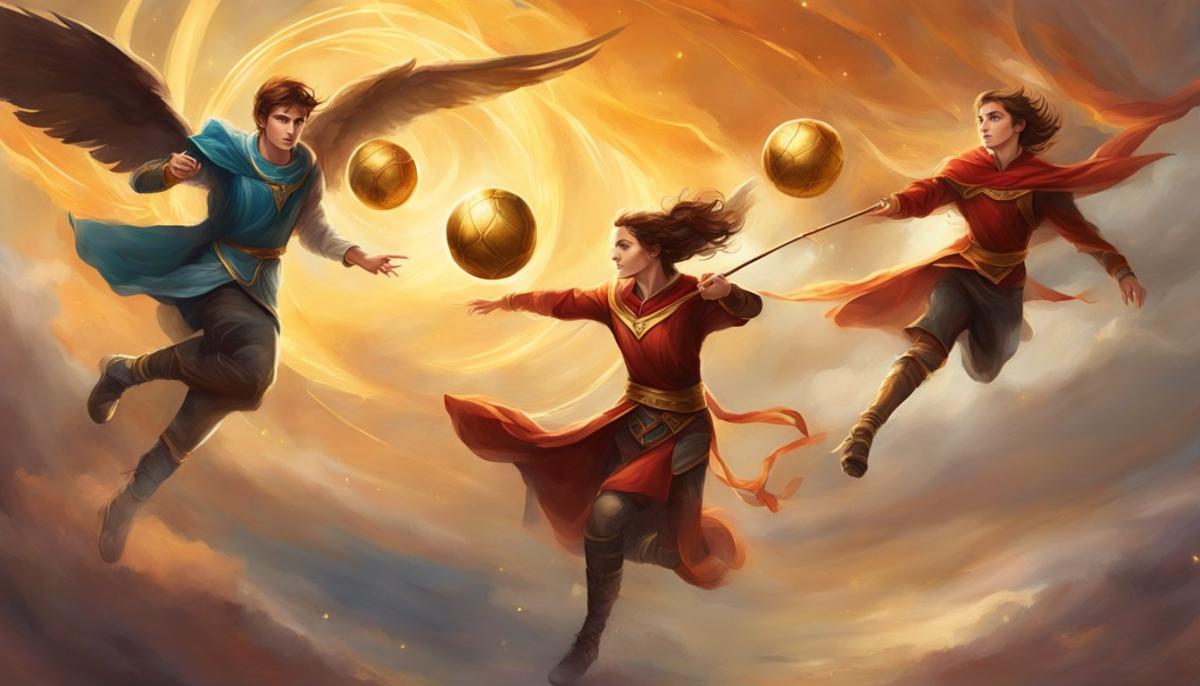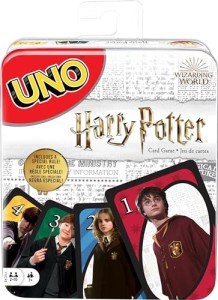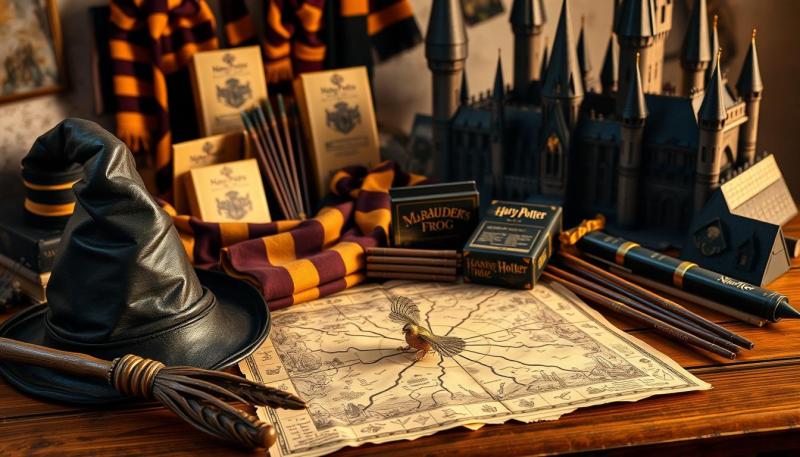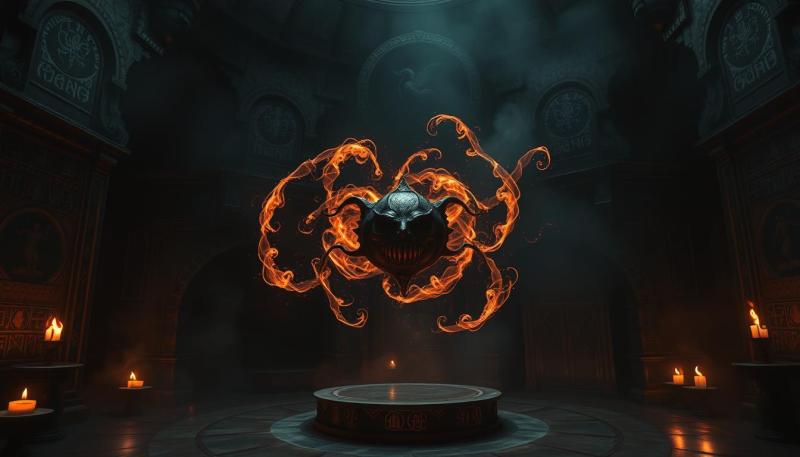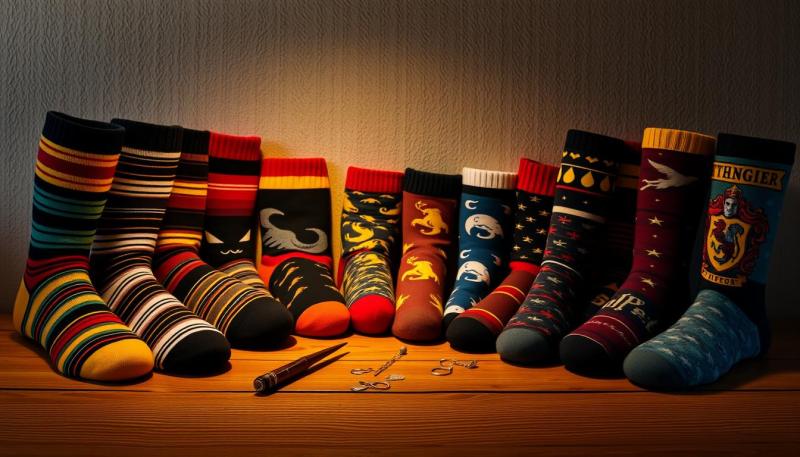The Golden Snitch is perhaps the most fascinating element of Quidditch, the magical sport beloved in the wizarding world. This walnut-sized, golden ball features delicate silver wings that allow it to dart and hover across the pitch at incredible speeds. As the smallest and most valuable ball in the game, catching the Golden Snitch not only awards your team 150 points but typically ends the match, making the Seeker's role crucial to victory.

What you might not know is that the Snitch has a rich history. Before this enchanted golden ball was introduced to the game, Quidditch players actually chased a small bird called the Golden Snidget. Today's Snitch mimics the erratic flight patterns of its living predecessor, making it extremely challenging to spot and capture during matches. Your appreciation for the game deepens when you understand how this tiny object transforms Quidditch from a simple scoring game into a strategic battle of skill and timing.
Key Takeaways
- The Golden Snitch is worth 150 points and typically ends the Quidditch match when caught by a Seeker.
- Quidditch features seven players per team, but only the Seeker specifically pursues the enchanted Golden Snitch.
- The Snitch evolved from using an actual bird (the Golden Snidget) to the magical golden ball we recognize today.
The Significance of the Golden Snitch in Quidditch
The Golden Snitch represents the most crucial element of Quidditch, dramatically influencing game outcomes with its 150-point value and game-ending capture. Its unique properties and historical development have shaped the entire structure of the wizarding world's favorite sport.
Historical Origins of the Snitch
The Snitch originated from a living bird called the Golden Snidget. In 1269, Wizards' Council Chief Barberus Bragge released a Snidget during a Quidditch match and offered 150 galleons to whoever caught it. This practice became popular despite being cruel to the tiny birds, which were nearly hunted to extinction.
Metal-charmer Bowman Wright solved this ethical dilemma by creating the first mechanical Golden Snitch in Godric's Hollow. His invention perfectly mimicked the Snidget's speed and movement patterns while eliminating harm to the endangered species.
The 150-point reward remains today as a nod to the original 150 galleon prize, preserving this historical connection across centuries of Quidditch development.
Rules and Scoring
When you play Quidditch, understanding the Snitch's role is essential. The Golden Snitch is worth 150 points when caught, often (but not always) determining the winning team. The game only ends when a Seeker successfully captures the Snitch.
The Snitch possesses remarkable enchantments that make it incredibly difficult to catch. It moves with unpredictable patterns, can hover motionless, then dart away at tremendous speeds. Its walnut size and golden color make it challenging to spot among the chaos of other game elements.
Modern Snitches contain "flesh memory" - they remember who first touched them, useful for resolving disputes in professional matches. This magical feature prevents cheating and ensures fair play at the highest competitive levels.
Quidditch Players and Positions

A standard Quidditch team consists of seven players with distinct roles, each contributing to the goal of winning matches in their own unique way. Each position requires different skills and focuses on different balls used in the game.
Role of the Seeker
The Seeker holds perhaps the most crucial position on a Quidditch team. Your job as a Seeker is to catch the Golden Snitch, a small, fast-moving winged ball that darts around the pitch at incredible speeds. Catching the Snitch not only awards your team 150 points but also immediately ends the game.
Famous Seekers like Harry Potter demonstrate the ideal qualities for this position:
- Sharp eyesight
- Quick reflexes
- Excellent flying ability
- Light build for speed
Seekers operate somewhat independently from the rest of the team. While other players focus on scoring and defense, you'll be scanning the field for that elusive flash of gold. Be aware that intentionally catching the Snitch when your team is down by more than 150 points results in a loss, so timing is everything.
Committing a "Snitchnip" (when any player other than a Seeker touches the Snitch) is a serious foul in Quidditch.
Draco Malfoy Quidditch Funko Pop Figurine
Catch the magic of Quidditch with this collectible Draco Malfoy Funko Pop figurine, perfect for any Harry Potter fan!
Product information
SGD 30.80
Product Review Score
4.81 out of 5 stars
63 reviewsProduct links
Chasers, Beaters, and Keeper
Chasers (three per team) handle the Quaffle, a red ball about the size of a football. Your primary goal as a Chaser is to throw the Quaffle through any of the opponent's three hoops to score 10 points. Chasers must be agile, have excellent passing skills, and work together as a coordinated unit.
Beaters (two per team) arm themselves with bats to hit the Bludgers – aggressive black balls that fly around trying to knock players off their brooms. Your job is to protect your teammates by batting Bludgers toward opposing players. Beaters typically need upper body strength and tactical awareness.
The Keeper guards your team's three goal hoops, preventing the opposing Chasers from scoring with the Quaffle. This position requires quick reflexes, positional awareness, and the ability to anticipate the movements of opposing Chasers. A skilled Keeper can significantly reduce the opponent's score, making the Seeker's job less pressured.
Cultural Impact and Symbolism
The Golden Snitch has become a powerful symbol within both the wizarding universe and our own culture, representing more than just a game piece in Quidditch. Its elusive nature and game-changing power have made it a metaphor that extends beyond the Quidditch pitch.
Harry Potter Golden Snitch Quidditch Board Game
Capture the excitement of Quidditch and challenge your friends to become the ultimate wizarding champion
Product information
SGD 12.62
Product Review Score
4.67 out of 5 stars
212 reviewsProduct links
The Golden Snitch in Literature and Film
In the Harry Potter series, the Golden Snitch appears throughout as more than just a sporting element. It first introduces you to Harry's natural flying ability when he becomes the youngest Seeker in a century at Hogwarts. The Golden Snitch serves a crucial function in Quidditch matches, not only scoring 150 points but also ending the game when caught.
In The Deathly Hallows, the Snitch takes on new significance when Albus Dumbledore leaves Harry the first Snitch he ever caught, enchanted with the phrase "I open at the close." This particular Snitch later reveals the Resurrection Stone, one of the three Deathly Hallows.
The Snitch has become iconic in merchandise, appearing in everything from LEGO Harry Potter sets to collectibles at The Wizarding World of Harry Potter attractions.
Symbolic Meanings and Metaphors
The Golden Snitch represents several powerful metaphors throughout the series. Its pursuit symbolizes the chase for one's goals and dreams, often requiring patience and keen observation.
For Gryffindor and Slytherin matches, the Snitch becomes the ultimate prize in their rivalry, representing victory beyond mere points. The small golden ball adds unpredictability to any match, showing how small things can dramatically change outcomes.
The Snitch's ability to remember human touch parallels how our actions leave lasting impressions. When it conceals the Resurrection Stone, it symbolizes how death (like the game's end) is inevitable but holds its own rewards.
In broader cultural contexts, the Snitch has become shorthand for an elusive, game-changing objective that requires special skill to attain.
